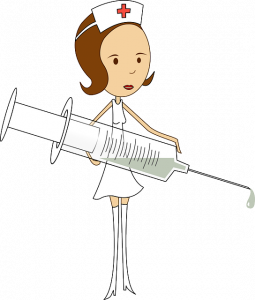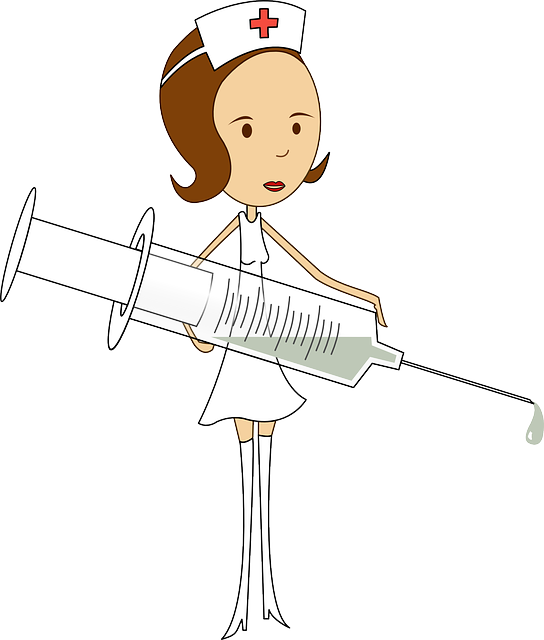Self-injection can be a stressful and intimidating experience for many people. It’s often necessary to take medication at home, but the thought of having to do it on your own can be overwhelming.
Fortunately, there are several strategies that you can use to make self-injection easier and more manageable. Here are some tips and advice to help you make the process simpler and more comfortable.
Preparing For The Injection
 Injecting yourself can be a daunting task, especially if you are new to it. It is important to properly prepare before attempting a self injection. Preparing for an injection will help ensure that the process goes smoothly and safely.
Injecting yourself can be a daunting task, especially if you are new to it. It is important to properly prepare before attempting a self injection. Preparing for an injection will help ensure that the process goes smoothly and safely.
The first step in preparing for a self injection is to gather all of the necessary supplies. This includes the device used for injecting, such as a syringe or pen injector, and the medication itself. Make sure that everything is properly labeled and that your supplies are sterile. You should also make sure you have a surface on which to administer the injection, such as an alcohol swab or clean towel, along with any other items you may need such as bandages or cotton balls. When all of the supplies have been gathered and prepared, you can begin your injection procedure.
Identifying The Injection Site
Injecting medication can be an intimidating task. It is important to learn proper injection technique and identify the injection site correctly in order to ensure safe and effective injections. The most common sites for self-injection are the buttocks, thighs, upper arms, and abdomen.
The best way to choose an injection site is to alternate between four different sites during each injection. This helps prevent skin irritation or damage that could occur if a single area is used too often. When preparing for an injection, it’s important to use a clean surface such as a countertop or table to lay out all supplies that will be needed. Once all supplies have been gathered, it is important to wash hands with soap and water or use an alcohol-based hand sanitizer before beginning any steps of the injection process. After washing hands, it’s time to identify the proper injection site by following guidelines from your healthcare provider or instructions on the medication package insert.
Assembling The Injection Supplies
Once you’ve identified the injection site, it’s time to assemble the supplies necessary for a successful self-injection. The most typical supplies include an alcohol swab, a syringe and needle, and the medication to be injected. Depending on your situation, you may also need additional supplies such as gloves or a sharps container in order to ensure safe disposal of needles after use.
Before beginning your injection, make sure that you have all of the required supplies on hand. It’s also important to check with your doctor or pharmacist to see if there are any special instructions for preparing and administering the medication. Once everything is ready, it’s time to begin the injection process.
Administering The Injection
Administering the injection can be an intimidating and anxiety-inducing process, but it doesn’t have to be. There are several steps that can be taken to make the self-injection process easier and more comfortable. First, create a routine that makes the injection less of a hassle. This may include having the supplies readily available so there is no time wasted fumbling for them or having set times each day when you inject so it becomes part of your daily schedule. Second, use a distraction technique such as listening to calming music or focusing on something else while injecting. This will take your mind off the actual injection and make it less stressful. Lastly, if possible, try to get someone else involved in the process who can provide moral support and guidance in case anything goes wrong. With these tips and tricks, administering a self-injection should become much more manageable and even enjoyable.
Disposal Of The Used Needles
Many people fear the pain of injections, and even more so, the process of disposing of the used needle. It can be a daunting task that leaves many feeling unsafe and uncomfortable. To make self injection easier, proper safety precautions should be taken to ensure safe disposal of needles.
Placing used needles in a puncture-proof container is the best way to avoid injury when handling them. These containers can come in many different shapes and sizes depending on the user’s needs. Additionally, they should be labeled “Sharps” or “Biohazard” to inform medical personnel of their contents. Once full, dispose containers at an authorized medical waste facility or have them picked up by a professional waste disposal company. Taking these steps will help reduce risks associated with improper needle handling and allow users to feel more secure while administering injections.
What Are The Possible Side Effects Of Self-Injections?
Self-injection can be a safe and effective way to deliver medication into the body, but it is important to understand the potential side effects. Common side effects of self-injection include pain and swelling at the injection site, infection, bruising, redness, itching and rash. Some medications may also cause an allergic reaction or anaphylaxis. If you experience any adverse reactions to injections, speak with your doctor right away.
How Should I Store My Injection Supplies?
When it comes to storing injection supplies, safety and accessibility should be your top priorities. It’s important to store all of your needles, syringes, and other supplies in a cool, dry place away from direct sunlight and heat. Make sure the storage area is out of reach of children or pets. Additionally, make sure that the area you choose won’t be disturbed often but will still be easy to access when you need your supplies.
What Should I Do If I Experience Pain Or Bleeding After An Injection?
If you experience pain or bleeding after an injection, it is important to remain calm and take a few steps to ensure your safety. First, apply gentle pressure with a clean cloth over the injection site for a few minutes. If the bleeding does not stop, seek medical attention right away. Additionally, if there is any swelling or redness or the pain persists, contact your doctor or pharmacist as soon as possible.
What Is The Best Way To Ensure Proper Disposal Of My Used Needles?
Proper disposal of used needles is essential to protecting yourself and others from potential harm. An ideal way to ensure proper disposal is to store used needles in a durable, puncture-resistant container such as a plastic bottle with a lid or metal coffee can. This container should be labeled “SHARPS” prior to being disposed of at a household hazardous waste collection site. Additionally, it’s important to not throw needles in the garbage or flush them down the toilet.
Are There Any Tips To Make Self-Injections Less Intimidating?
Self-injections can be an intimidating prospect, but there are some tips to make them less so. To start, take a few deep breaths before you begin and try to relax your muscles. Prepare the injection site ahead of time by cleaning it with an alcohol swab and allowing the area to dry completely. If possible, have someone else administer your injection for you as they may be able to provide emotional support or physical assistance if needed. Finally, use a timer and only inject yourself once the timer goes off – this will help keep the process short and manageable.
Self-injections can be a daunting task, but there are steps you can take to make them less intimidating. First and foremost, familiarize yourself with the potential side effects of self-injections so that you know what to look out for. Make sure to store your injection supplies safely and properly dispose of used needles. Lastly, if you experience any pain or bleeding after an injection, seek medical attention immediately. With these tips in mind, I’m sure you’ll find giving yourself injections much easier in no time.









